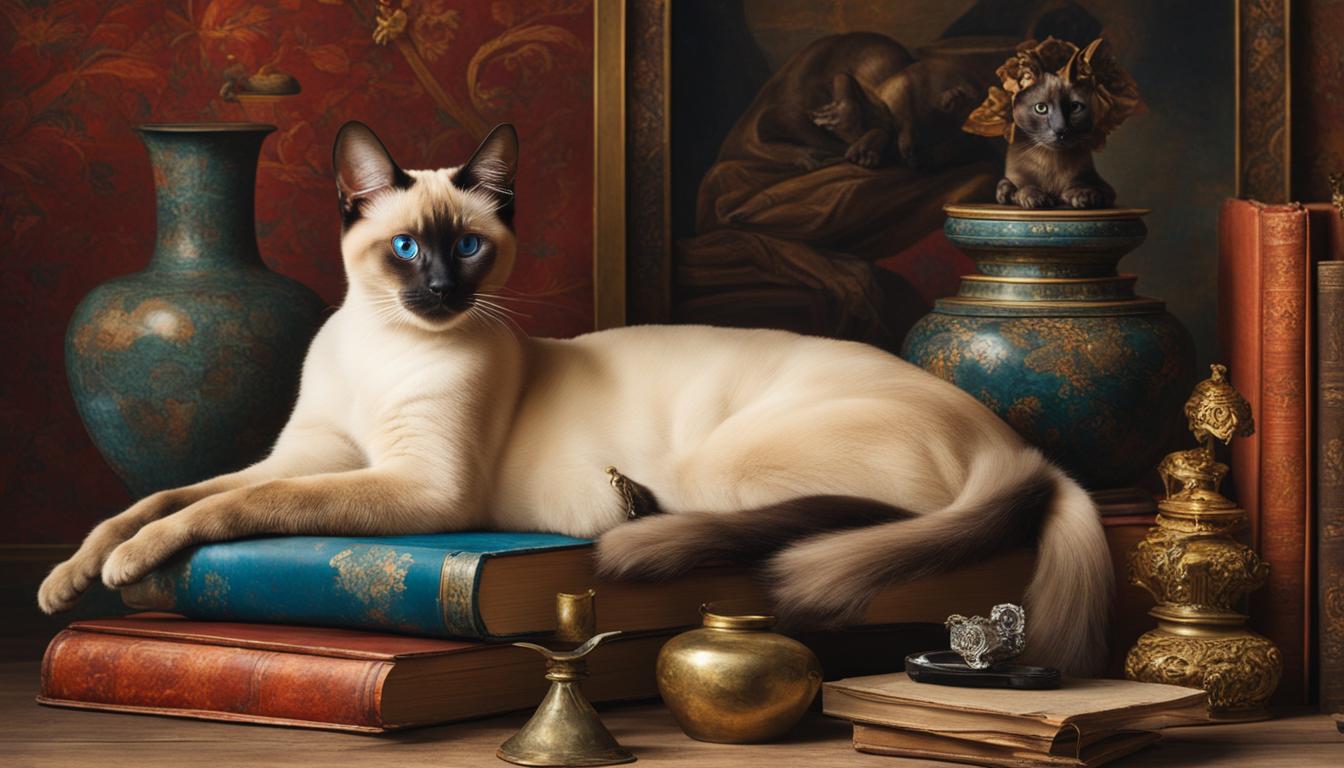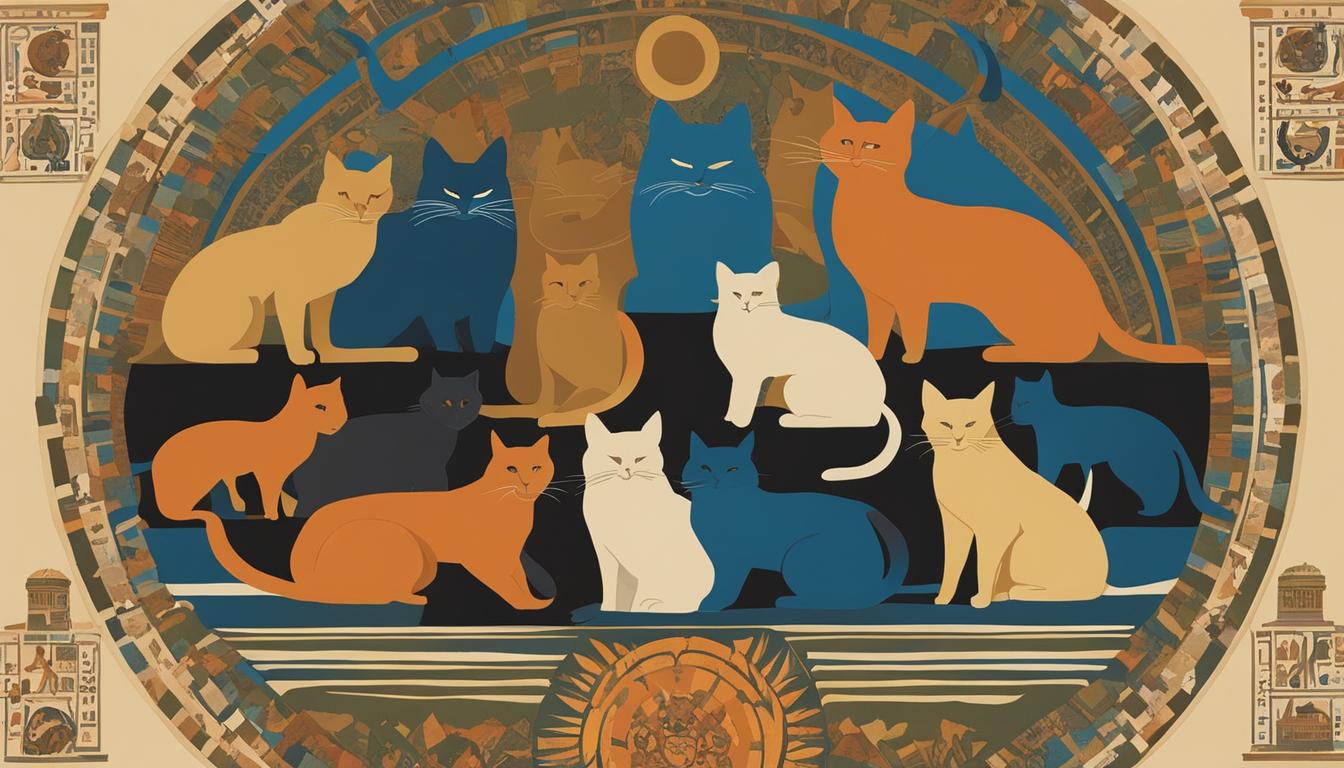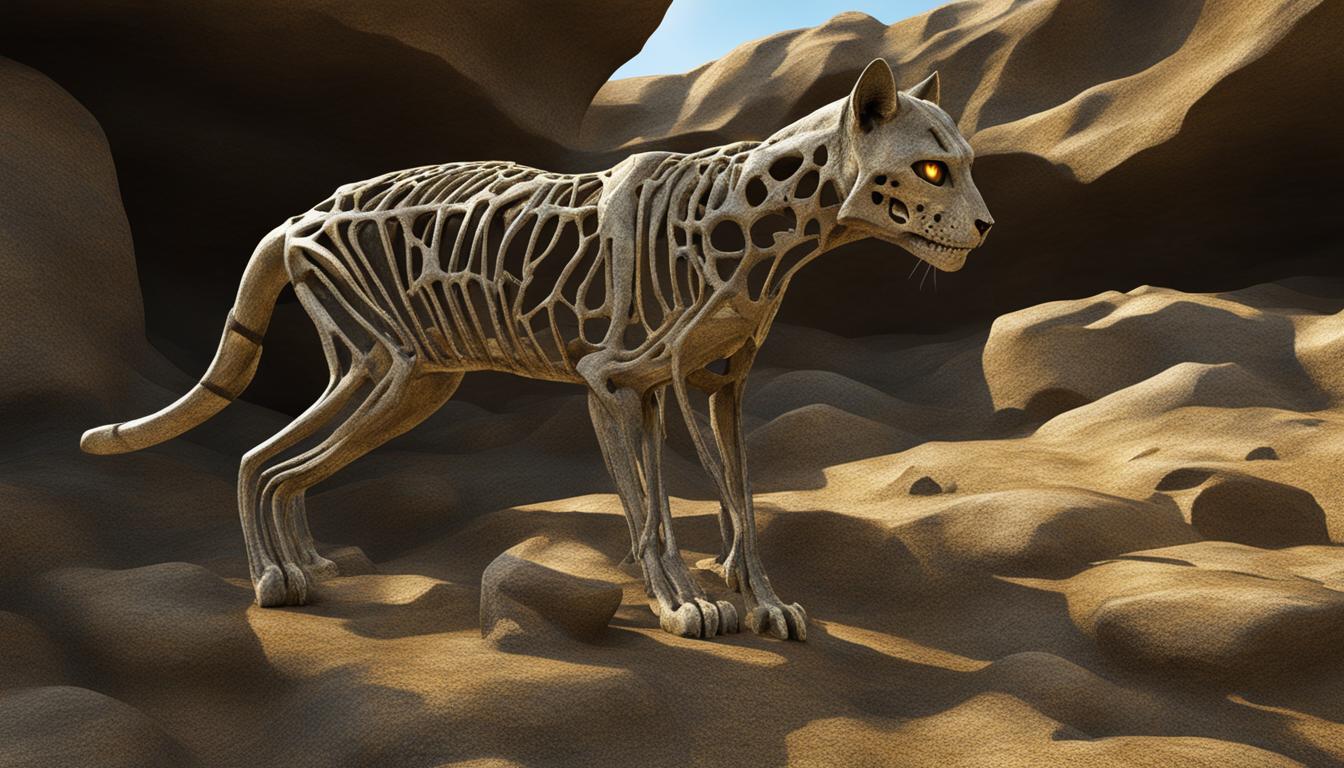Gather ’round, fellow feline enthusiasts! Today, we embark on a captivating journey through the annals of history to uncover the enchanting tales of cats and their profound impact on renowned historical figures. From wise leaders to revered writers and visionary artists, these historic personalities found solace, inspiration, and companionship in their furry counterparts. Join me as we delve into the extraordinary stories of how cats left an indelible mark on the lives of these influential individuals, forever etching their paw prints in the chronicles of time.
Key Takeaways:
- Cats have played a significant role in the lives of famous historical figures, leaving a lasting impact on their legacies.
- Various cultures throughout history revered cats, considering them sacred and associating them with good fortune.
- Cats played practical roles in history, such as pest control on maritime expeditions and protecting valuable manuscripts in ancient libraries.
- Ancient Egyptian pharaohs held an unparalleled bond with their feline companions, treating them with utmost devotion.
- Writers and artists found inspiration and solace in the company of cats, shaping their creative works.
Cats in Various Cultures
Cats have held a special place in various cultures throughout history. In ancient Egypt, cats were considered sacred and were often depicted alongside gods and goddesses. They were believed to have healing properties and served as protectors and guides. In Norse mythology, cats were seen as benevolent creatures that brought good fortune to those who showed them kindness. The enduring symbolism and importance of cats in different historical contexts showcase the deep admiration and reverence humans have held for felines.
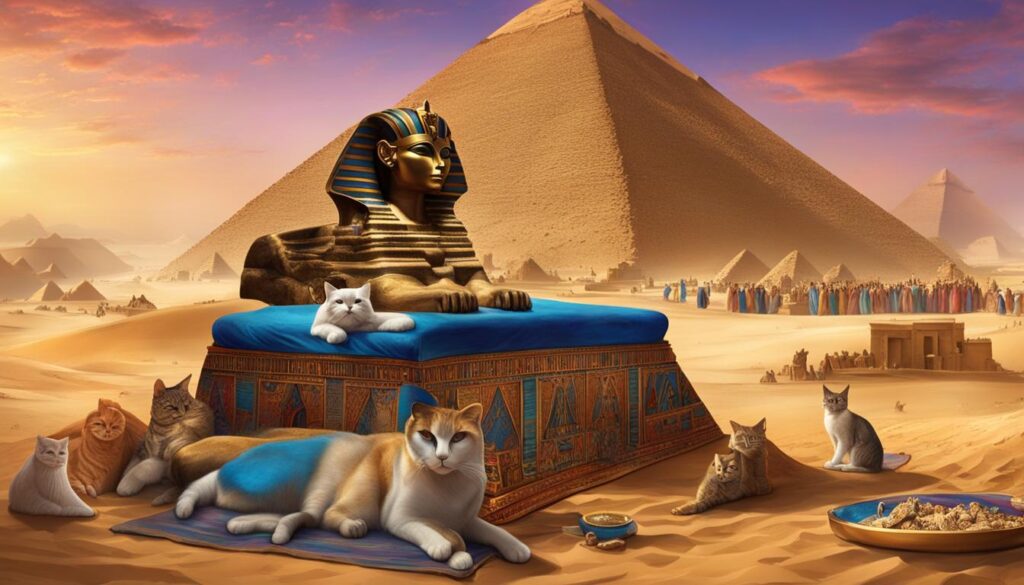
Cats in various cultures have been revered for their mystical qualities and revered as symbols of luck, wisdom, and protection. In ancient Egypt, cats were associated with the goddess Bastet, who was believed to possess cat-like qualities of grace and agility. They were seen as sacred creatures and were mummified after their deaths to accompany their owners in the afterlife. The reverence for cats in Egyptian culture is evident in the numerous statues, amulets, and paintings that depict feline figures.
In Norse mythology, the goddess Freyja was often depicted with two large cats by her side, representing her connection to fertility, love, and beauty. Cats were seen as loyal companions to Freyja and were believed to bring good fortune to those who treated them kindly. This belief in the positive influence of cats has been passed down through generations, shaping the cultural perception of these beloved creatures.
Cats as Cultural Icons
Cats’ influence on various cultures extends beyond mythology. Throughout history, notable cats have left their pawprints on the lives of historical celebrities. One such example is the famous cat named Trim, who accompanied Captain Matthew Flinders on his voyages in the late 18th century. Trim became a beloved companion to Flinders and was known for his intelligence and adventurous spirit. He even survived being shipwrecked and stranded on an island with Flinders. Trim’s presence on these maritime journeys not only provided companionship but also contributed to the practical role cats played in controlling rodent populations on ships.
Cats in History
In addition to their symbolic significance, cats have played important roles in history as practical companions and pest controllers. Their presence on maritime expeditions, for example, was crucial in preventing the spread of diseases carried by rodents on ships. By keeping rodent populations in check, cats ensured the safety of food supplies and the well-being of sailors. Furthermore, cats were employed in ancient libraries to protect valuable manuscripts from damage caused by mice. Their natural hunting instincts helped control the rodent population, safeguarding the fragile parchments and preserving knowledge for generations to come.
The relationship between cats and historical figures extends beyond their practical contributions. Throughout history, many leaders and influential individuals have had cats as companions. These feline friends provided comfort, companionship, and inspiration to figures such as writers, artists, and even presidents. From ancient civilizations to modern times, cats have shared the lives of historic figures, leaving their paw prints on the pages of history.
One notable historical example of a feline companion is President Abraham Lincoln’s cat, Tabby. Tabby was a beloved pet in the Lincoln household, providing company and consolation during the turbulent times of the American Civil War. It is said that President Lincoln often allowed Tabby to join him during cabinet meetings, considering her presence to be a source of comfort and relaxation.
“No matter how much cats fight, there always seems to be plenty of kittens.” – Abraham Lincoln
Tabby’s presence in the White House was a testament to the profound bond between humans and their feline companions, even in times of great adversity. As we continue to explore the influence of cats in history, we discover the unique ways in which these enigmatic creatures have touched the lives of historical figures and shaped the course of human events.

The Presidential Cats in History
| President | Cat | Description |
|---|---|---|
| Abraham Lincoln | Tabby | Beloved pet who provided comfort during the Civil War |
| Theodore Roosevelt | Slippers | Domestic shorthair who resided in the White House |
| Bill Clinton | Socks | Tuxedo cat who became a popular public figure |
| George W. Bush | India | Black cat who lived in the White House during the Bush administration |
Cats Owned by Historical Personalities: The Unbreakable Bond
When it comes to famous cats in history, the feline companions of ancient Egyptian pharaohs hold a special place. These regal leaders, known for their divine authority, shared an unbreakable bond with their cats, elevating them to a position of reverence and admiration. The pharaohs believed that their cats, with their graceful presence and mystical aura, symbolized their own authority and divine lineage.
Not only were cats treated with utmost luxury and privilege in the palaces of pharaohs, but they were also considered an extension of the ruler’s power. It is said that killing a cat, even by accident, was considered a grave offense punishable by death. The pharaohs’ devotion to their feline companions was so profound that the discovery of cat cemeteries in ancient Egypt showcases the enduring legacy of their bond, transcending time and death.
“The cats of the pharaohs were more than mere pets; they were esteemed as symbols of power and divinity, reflecting the grandeur of their royal owners.” – Egyptologist Amelia Arnau
The Legacy of Famous Egyptian Feline Companions
The enduring influence of cats in ancient Egypt can be witnessed in their depictions in art and literature. Paintings and sculptures featuring cats adorned the walls of temples and tombs, immortalizing the importance of these beloved animals. The ancient Egyptians believed that cats possessed protective qualities and were believed to ward off evil spirits.
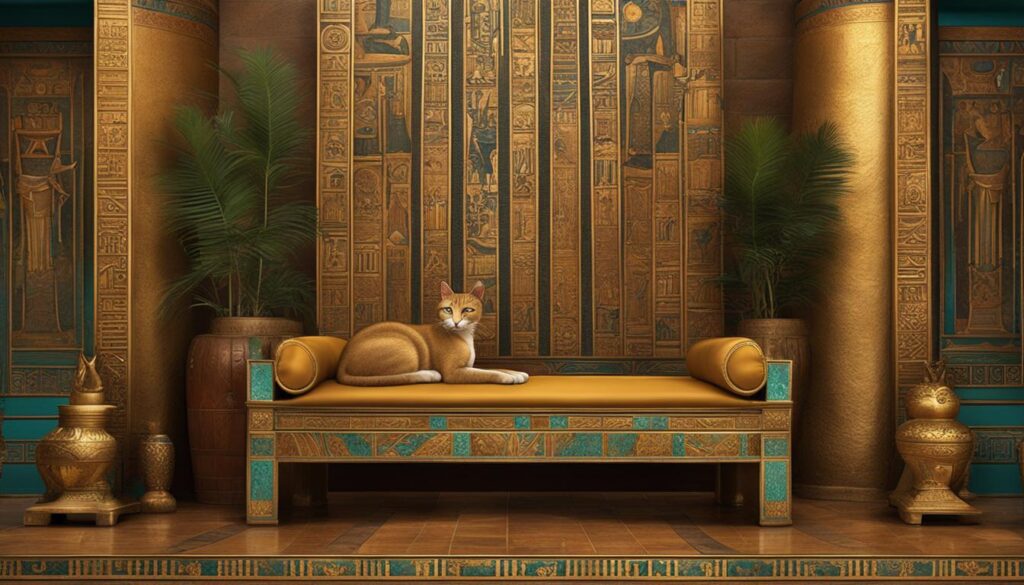
| Cat Name | Pharaoh | Significance |
|---|---|---|
| Miu | Ramses II | Served as his loyal companion during battles and diplomatic meetings, believed to bring him good fortune in his conquests |
| Bast | Amenhotep III | Considered the royal cat, Bast was believed to possess healing powers and was associated with the goddess of fertility and protection |
| Mafdet | Khafre | Ancestor of the domesticated cats, Mafdet was seen as a protector and defender against venomous snakes and scorpions |
The legacy of these famous cats lives on, symbolizing the deep connection between pharaohs and their feline companions. It serves as a testament to the profound impact that cats have had on the lives of historical personalities, leaving a lasting mark on the tapestry of history.
Famous Writers and Their Furry Muses
Writers throughout history have found solace, inspiration, and companionship in the presence of cats. These enigmatic creatures have played an influential role in the lives of famous literary figures, leaving a lasting impact on their works and personal lives. From Edgar Allan Poe to Mark Twain, cats have been cherished companions, inspiring some of the most iconic works in literary history.
“I am convinced that cats are the true geniuses of the world,” proclaimed French poet and writer, Colette. This sentiment is echoed by many writers who have found inspiration and creative energy in the company of their feline friends. Edgar Allan Poe, renowned for his dark and macabre tales, drew inspiration from his beloved pet cat, Catterina. In his most famous story, “The Black Cat,” Poe explores themes of guilt and madness, drawing on his deep connection with his own black cat. The presence of cats in Poe’s works highlights their mysterious nature, mirroring the enigmatic elements of his stories.
Mark Twain, renowned for his wit and humor, had a deep appreciation for cats. He believed that their intelligence and independence made them ideal companions. Twain once famously stated, “If man could be crossed with the cat, it would improve the man but deteriorate the cat.” His fondness for cats is evident in his writings, showcasing their mischievous and independent nature. Their presence in Twain’s life served as a source of inspiration and comfort.
“The cat will mew, and dog will have his day.” – William Shakespeare
The Influence of Cats on Visual Artists
It is not just writers who have sought the company of cats; visual artists have also been captivated by their mystical allure. Pablo Picasso, one of the most influential artists of the 20th century, had a deep appreciation for cats. He often depicted them in his artwork, emphasizing their graceful and elegant demeanor. Picasso once said, “When I woke up in the morning and I saw these cats, that’s when I knew I must have died and gone to heaven.” The presence of cats in Picasso’s life undoubtedly had a profound effect on his artistic expression and creativity.
Salvador Dali, a surrealist painter known for his eccentricity, also found inspiration in the companionship of cats. Dali believed that cats possessed an otherworldly quality that mirrored his own surreal artistic vision. Their presence in his life served as a grounding force, providing him with a sense of stability amidst the chaos of his works. Dali once stated, “I don’t do drugs. I am drugs.” This quote exemplifies his unique perspective on life and art, perhaps influenced by his furry muses.
In conclusion, cats have had a profound influence on historical figures, particularly writers and visual artists. Their enigmatic nature, intelligence, and independence provide inspiration and companionship to those who appreciate their unique qualities. From Poe to Twain, Picasso to Dali, these famous individuals found solace and creative energy in the presence of their feline companions. Cats continue to play an integral role in the artistic and literary world, reminding us of the enduring power of their influence.
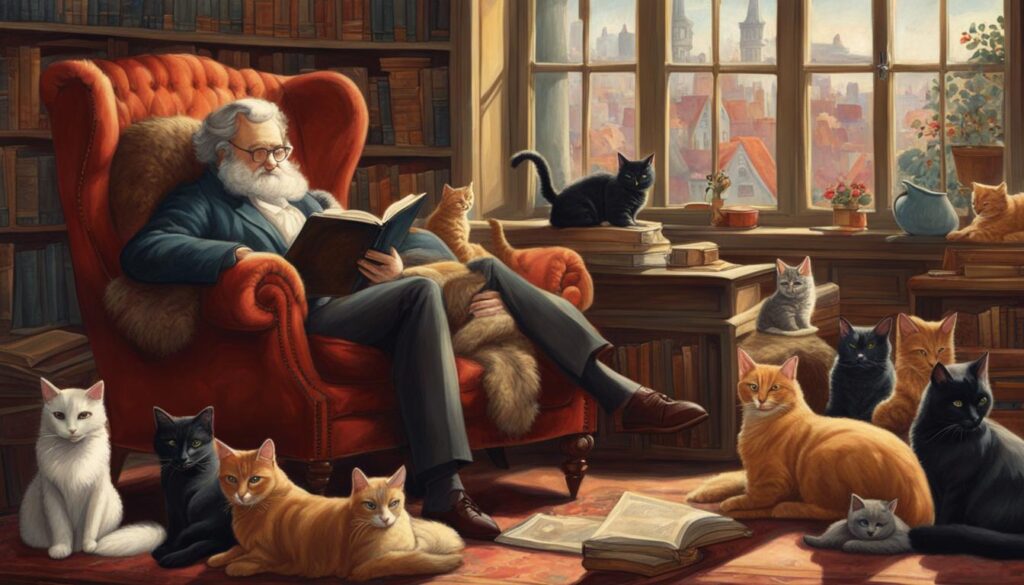
Conclusion
As I conclude this fascinating exploration into the world of historical figures and their feline companions, one thing becomes abundantly clear: cats have played a vital role in shaping the lives and legacies of famous individuals throughout history. These furry creatures have left a lasting impression, not only as loyal companions but also as sources of inspiration and practical help.
Throughout ancient civilizations, cats held a sacred place, especially in Egypt, where they were revered as divine beings. The pharaohs cherished their feline companions and treated them with the same luxuries and privileges that they themselves enjoyed. The bond between these majestic rulers and their cats went beyond life, as evidenced by the discovery of cat cemeteries that speak volumes about the profound connection they shared.
In more recent times, famous writers and artists have found solace and inspiration in the presence of cats. Edgar Allan Poe immortalized his pet cat in his chilling tale “The Black Cat,” while Mark Twain appreciated the intelligence and independence of his furry friends. Artists like Pablo Picasso and Salvador Dali surrounded themselves with cats, drawing inspiration from their enigmatic gaze. Indeed, cats have left an indelible mark on the literary and artistic world, influencing the works of these renowned individuals.
From their practical contributions in pest control, safeguarding valuable manuscripts, to providing companionship and inspiration, cats have enriched the biographies of historical figures. They have been the loyal confidants and muses to famous celebrities throughout time. As we delve into the stories of these remarkable individuals, we are reminded of the timeless allure and power that cats possess. Their presence in the lives of historical figures serves as a testament to their enduring influence and importance.
FAQ
Did ancient civilizations worship cats?
Yes, cats were considered sacred in ancient civilizations like Egypt and were often associated with gods and goddesses.
How did cats contribute to maritime expeditions?
Cats played crucial roles in pest control on ships, preventing the spread of diseases carried by rodents.
What was the relationship between Egyptian pharaohs and their cats?
Pharaohs revered cats as divine beings and kept them in their palaces as a sign of devotion.
Did famous writers find inspiration in cats?
Yes, writers like Edgar Allan Poe and Mark Twain found companionship and inspiration in their feline friends.
Did cats have practical contributions in history?
Cats protected valuable manuscripts in ancient libraries by controlling populations of mice that could damage them.
How have cats influenced famous artists?
Artists like Pablo Picasso and Salvador Dali surrounded themselves with cats, finding solace and inspiration in their presence.

